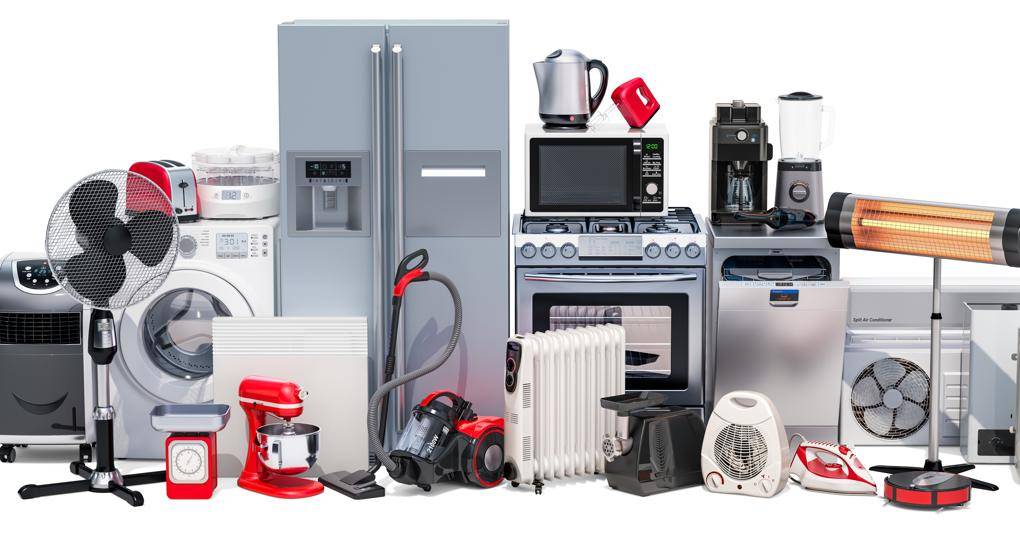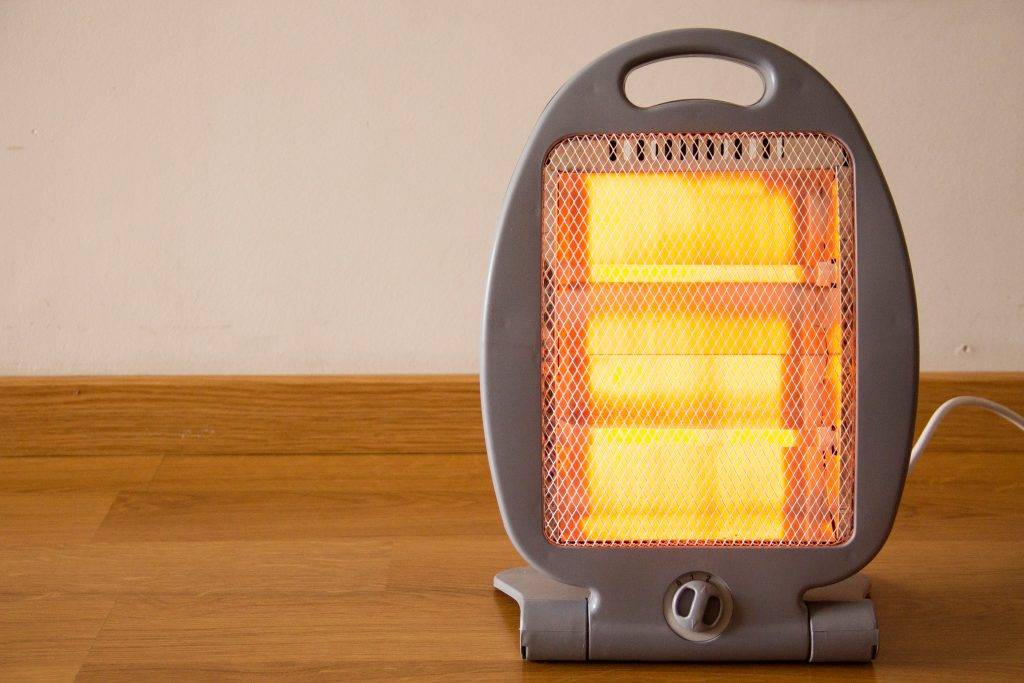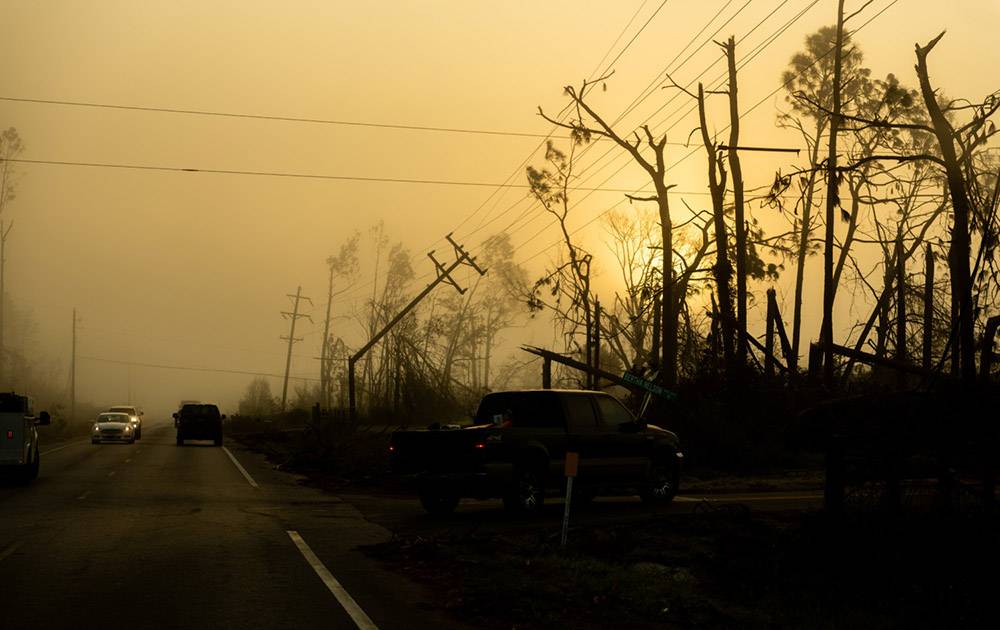Portable Generator Sizing and Wattage Calculator
Related:
How to calculate your Generator’s Wattage and those of your Appliances
When you are planning to buy a power generator for your electrical appliances and/or tools, knowing the required watts, which is the electrical power, is very important. There is no need of buying the 10000 watt generator when your electrical need is lightweight. And at the same time, there is no need of buying a less powerful generator that will not power all your electrical appliances sufficiently, and efficiently.
The only way to make sure that you are buying the right generator is knowing both the generator’s electrical watt output, and the watts needed by your electrical appliances and tools. This information will help you in sizing your budget according to your electrical power needs.
Also, you should know that different electrical appliances need different watts of electrical power for operation, depending on such factors as what they’re used for, and their manufacturer’s designs. As such, not all your appliances will require the same amount of watts to operate. Some require more power surge than others. Therefore, you should take into considerations the minimum and the maximum electrical power output (watts) that all your electrical appliances need. Make sure that the portable generator that you are buying is capable of providing your appliances and tools with the electrical power that they need. This will set you ahead of schedule.
How can you determine the power needed by all your electrical appliances?
Basically, there are two ways that you could use to determine the amount of electrical power that your tools and appliances need. Most electrical appliances and motors quantify their power needs in amps, which is the unit for current. Finding the amps needed by your electrical appliance and/or tool is a simple task. This information is contained on a stamp on the bottom side of your appliance; the nameplate; and the data tag which are found on all electric motors. This is one way of finding the amount of electrical output that your appliances need.
The other method involves using a load tester to determine how big of a generator do i need. A Honda handheld load tester could help you determine all your appliances electrical needs. Just test them one by one and you will find the total power output that they would require. Please note that some appliances rate their electrical power needs in amps. The electricity generator will rate its electrical power output in watts. For you to know the right generator that will provide you with the power that your equipment need, you will have to convert amps into watts.
How then, can you convert amps into watts?
In the electricity field, there’s Ohm’s law, which you could use to convert amps into watts, and vice versa. The Ohm’s law states that voltage is equal to the product of current and resistance. This means that you will multiply amps by resistance for you to get the voltage of a particular electrical appliance. The same law says that power (Watts) is equal to voltage multiplied by current.
Since most electrical appliances use 120 volts, you could just multiply this voltage by the amps of the device. You will get the watts that the electrical appliance in question needs, for it to run or operate efficiently. From the forgoing, watts equals the product of voltage and the current (amps). For example, if a bulb uses 120V and its current is 150mA, then its wattage becomes 18 watts. A milliamps (mA) is equal to 0.001 Amps. 18 W is the answer you get when you multiply 120V by 0.15 Amps (150mA). Amps is, then calculated by diving watts by the volts.
And for you to determine how much power you need from an electricity generator, you will add all the watts of your electrical appliances.
The difference between Starting Wattage vs. Running Wattage
The starting watts is the electrical power needed by your appliance to start running. The running wattage is the amount of power it needs to continue operating. Often, the starting watts is higher than the running watts, by up to 3 times. When buying a generator, you will have to consider each appliance’s starting and running watts, for an efficient electrical power supply.
There are two major types of loads (electrical appliances): The resistive loads; and the reactive loads. Resistive loads require the same starting and running watts. On the other hand, the reactive loads (appliances) require a higher starting watts than their running watts. Loads such as light bulb, and toaster are resistive loads. On the other hand, loads such as freezers, furnace fans, well pumps, air conditioner and power tools, just to mention a few, are referred to as reactive loads.
Reactive loads have electric motors and fans, which need additional electrical power thus a higher starting wattage. Freezers and furnace fans therefore, need a higher starting wattage to get your systems up and running. Therefore, don’t rush while buying a generator for your electrical loads/appliances. Take some time and research your generators.
How Much Power Do Your Appliances Need?

In case you don’t know your RV appliance’s actual load capacity, you can use a general rule of thumb to determine this. The regular RV fridge needs about 600 watts to start. It needs 180 watts to run. Slow cookers, on their part, need 170 to 270 watts for both starting and running. A 650- watt microwave requires 1,000 watts right from start to finish.
A smaller flat TV requires only 120 to 200 watts. Keep in mind that most smart TVs draw reasonable power, even when switched off. This enables them to restart automatically. Satellite receivers require some 250 watts continually, just like generator-powered laptop computers. A radiant heater packs in about 1,300 watts while starting and when running continuously.
RV energy Hogs
Air conditioners are considered as the energy hogs of the standard RV. A 7,000 BTU rooftop RV AC requires around 1,700 watts starting and 600 running watts. A larger, 10,000 w BTU RV AC needs some 2,000 watts starting and 700 watts running. After adding up the starting and running wattage of the baseload, you will get how much power your generator requires.
Using an example of a smaller AC, microwave, fridge, and TV, the starting load would be about 3,420 watts, if you switched them all at once. The running load will be some 2,000 watts. This does not, however, take the light bulb load into account. So, if you want to run an air conditioner and several essential home appliances simultaneously, you need a generator with a capacity of, at least, 3,000 starting watts and 2,000 running watts.
How to Determine Appliance Power Requirements
You will discover that most electric motors and appliances usually list their power requirements in the form of amps. Some typical locations include The nameplate, a bottom-side stamp, or a data tag placed on all electric motors.
Appliances with electric motors generally need some additional start-up power. This may be up to 3 times the running amount.
Note that older appliances might require more power than indicated since, over time, they become less efficient.
Use a tester for appliance load to determine the precise power of regular home appliances and tools.
Calculating Watts and Kilowatts
Power is defined as the amount of work done in a given time. The term watts refers to the unit used to express power. Indeed, watts is a typical function of current and voltage.
To calculate the quantity of electric power, you should multiply the amperes by voltage. Thus, you will obtain what is referred to as watt-hours. Moreover, Kilowatt-hours is another common unit. Kilowatt-hours is basically determined by the number of watts divided by 1,000. Further, one kilowatt equals 1,000 watts. By this measure, if you divide 1,500 Watts by 1,000, the result is 1.5 Kilowatts.
Power Surge
Generators are commonly rated in Watts or Kilowatts. This expresses the amount of work they are capable of doing. Similarly, an athlete can burst out in explosive, sprinting energy for some seconds, a generator can do something comparable, mustering a surge of extra power within seconds. This kind of added capacity allows the generator to ignite electric motors. Typically, it takes an initial power boost to start turning.
The above example shows the relationship existing between volts, watts, and amps, and also why watts or kilowatts (rather than amps and volts) are used to rate a generator’s power.
Types of Loads
Some appliances generally require more power to start up. Others usually maintain constant power. If you want to calculate your power needs correctly, you should know the kind of loads you wish to run. A load is generally defined as the device that requires power.
There are two main kinds of loads:
Resistive loads
Resistive loads are simple. They typically use the same power capacity to start and run appliances. Most resistive loads are used in heating. Here are a few examples of resistive loads: Toasters, Coffee makers, Light bulbs.
Reactive Loads
Reactive loads usually contain an electric motor. This requires extra power to start. However, it uses less power once it starts running. The starting power is about three times the power capacity needed to run regular applications. Here are some examples of reactive loads are: Furnace fans, air conditioners, well pumps, air compressors, power tools, and bench grinders.
Some household appliances, for instance, the furnace or refrigerator, come with intermittent internal fans. Generally, some extra wattage/power is required to start the fan every time. Moreover, refrigerators have a defrost cycle. This also requires energy, not to mention the fans and the compressor.
Further, reactive loads may require extra power as soon as the electric motor starts to work. For instance, when a saw starts cutting wood, its power requirement generally increases. This, however, does not apply to most household appliances.
What Size of Generator Will Run All Appliances at Home?
You are probably fed up with the ordeal of being left in the dark every time a power outage happens. Most likely, you are searching for a suitable home generator that can help you deal with this issue once for all. How will you know which is the best type of generator to purchase? How can you get a machine that will run your home and keep you protected during emergencies?
Here is how to determine the best generator size for your needs:
Find out the facts about the starting wattage for the generator you want to buy. This means you need to know the surge wattage of the appliances at home and the fixtures you wish to power.
Pick a generator that has enough power capacity to exceed the combined wattage of all appliances that you plan to power. In time, we will let you know exactly how to do this. In the meantime, it would be interesting to answer this question first: How are generators typically sized?
Which Heaters Do You Use?

Also, what kind of water heater do you use? Is your heater electric, oil-fired, or gas-powered? You should know that oil or gas-fired water- heaters generally require less power. They can work with as little as 2,500 watts.
On their part, electric heaters usually require no less than 4,500 watts to work. Most householders generally power a variety of household gadgets and appliances, with about 3,000 to 6,500 watts of power.
In case your home uses a smaller furnace or city water, you should still expect to use between 3,000-5,000 watts. This should ordinarily cover your needs. If you have a larger furnace or well- pump, you will, most likely, need a generator with a capacity of 5,000 to 6,500 watts.
Generators for Power Outages

There are those who, unfortunately, have to deal with the challenge of frequent power outages where they live. Sometimes things get worse, and these outages happen frequently and are prolonged.
If you stay in an area that is prone to the vagaries of severe weather characterized by ice storms, blizzards, hurricanes, and other hazards, the situation can be worse. In such cases, before buying any generator, think twice.
Particular types of generators will do well in these situations.
Consider buying the following types of generators:
- Large inverter.
- Home standby.
These three types of generators are usually packed with enough power capacity to run the entire household. They can be directly connected to the circuit breaker panel at home. Moreover, they will allow you to control and run hardwired appliances. These include air conditioning, central heating, sump pumps, electric ranges, well pumps, and water heaters.
In case you have these at home, and you think it necessary to have them running during power outages, make sure you install a transfer switch at your breaker box. Get a licensed electrician to do that.
Generators for Occasional Outages
Other people live in areas where occasional power outages happen. At times these are sustained. Regardless, you would not wish to spend a fortune buying a standby home generator.
In such cases, consider buying the following suitable types of generators:
- Large inverter generator.
- Portable generator.
Unless you experience frequent power outages each year, it may not be prudent to spend $10,000 or more as the cost of buying and installing a stationary unit. You could, instead, save much money if you are willing to pull your large portable or inverter generator out of a shed or garage, hooking it up during power outages. Even so, it is advisable to install a transfer switch in such situations.
Rare Lack of Power
Anything can still happen even if you are fortunate enough to have reliable running power. These are human processes that cannot be 100% perfect. Have a standby generator at home to stay safe. You will have more peace of mind.
Consider buying either a recreational inverter generator or a midsized inverter generator. The latter machine will give you enough power to run a window A/C, space heater, or a fridge.
Indeed, machines like recreational generators are compact items that are easy to carry wherever you go. You can even use it to run your TV and cooktop at a wild tailgate.
How Do You Measure Regular Generator Power?
In simple terms, generators are usually sized based on their electric output capacity. They are not sized considering the physical dimensions or characteristics.
The power output of a generator is usually measured in Kilowatts (kW) or watts (W). Both of these are common measurements applied to electricity. Generally speaking, 1kW= 1,000W.
Of course, whenever you plan to purchase a generator, make sure you go for the right-size of a generator. Why is this wise?
Avoid Overloading the Generator
If you have a generator that is too small for your power needs, you are likely to overload the machine. Otherwise, you may also find yourself forcing a smaller generator to supply more power than it was designed to do.
If this happens, the generator will automatically shut off or get overheated. Not only would this endanger the life of your generator, but you will also put your valued appliances at the risk of damage.
What happens if you purchase a generator that is too big, in terms of power capacity?
Buying an Oversize Suit?
In that case, you will be overpaying to buy a machine that you don’t really need. You will spend much on the generator unit and spend even more on the operation costs of a device that is grossly underworked.
To illustrate, you will be like a man who buys an expensive, oversized suit that he would never wear for social functions. Yet the outfit needs regular maintenance, at high costs, in the laundry.
How, then, can you accurately calculate the right generator size to satisfy all your domestic power needs?
Conclusion
There is no doubt that electricity has completely changed the world. As man’s reliance on electricity grows, so does the impact of electricity in our lives. Yes, this power is what keeps our homes safe, warm, dry, and powers a variety of tools and appliances, making our lives easier.
Learn the terms associated with this peculiar phenomenon, how to calculate generator power, and, ultimately, how to pick the best generator for your needs. Life will, likely, become much better.
